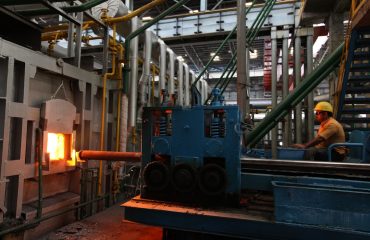Modular steel system solutions are revolutionizing the construction, industrial, and commercial sectors. Their adaptability, speed of construction, and cost-effectiveness are making them a preferred choice for a wide range of projects. This comprehensive guide delves into the intricacies of these systems, exploring their design, advantages, applications, cost implications, and future trends.
1. The Design and Engineering of Modular Steel Systems
Modular steel systems are based on the principle of prefabrication. Steel components, meticulously designed and engineered off-site, are fabricated to precise specifications. This precision ensures seamless assembly on-site, minimizing errors and delays. The design process incorporates advanced software and modeling techniques, allowing for detailed visualization and optimization. Key aspects of the design include:
- Component Standardization: Standardized components ensure efficient manufacturing and assembly, reducing material waste and labor costs.
- Connection Systems: Robust and reliable connection systems are crucial for structural integrity. These may involve bolting, welding, or a combination of methods, depending on the application and load requirements.
- Structural Analysis: Rigorous structural analysis is performed to ensure the system can withstand anticipated loads and environmental factors.
- Customization Options: While standardization is key, modular systems offer considerable flexibility for customization. Different components can be combined to create unique structures tailored to specific project requirements.
2. Advantages of Choosing Modular Steel Systems
Modular steel systems offer a compelling array of advantages over traditional construction methods:
- Faster Construction Times: Prefabrication significantly reduces on-site construction time, accelerating project completion and minimizing disruption.
- Cost-Effectiveness: Reduced labor costs, material waste, and project duration contribute to overall cost savings.
- Improved Quality Control: Fabrication in a controlled factory environment ensures higher quality control compared to on-site construction.
- Enhanced Durability and Strength: Steel’s inherent strength and durability make these systems resistant to damage and capable of withstanding harsh environmental conditions.
- Sustainability: Modular steel systems can incorporate sustainable materials and practices, minimizing environmental impact.
- Flexibility and Adaptability: Modules can be easily reconfigured or relocated, offering long-term adaptability to changing needs.
3. Diverse Applications of Modular Steel Systems
The versatility of modular steel systems makes them suitable for a wide range of applications:
- Residential Buildings: From affordable housing units to luxury apartments, modular steel systems offer efficient and cost-effective solutions.
- Commercial Structures: Retail spaces, office buildings, and warehouses can benefit from the speed and efficiency of modular construction.
- Industrial Facilities: Factories, workshops, and storage facilities can be quickly and efficiently constructed using modular steel systems.
- Infrastructure Projects: Modular steel can be used in bridges, pedestrian walkways, and other infrastructure elements.
- Temporary Structures: Modular systems are ideal for temporary structures such as event venues, exhibition halls, and disaster relief shelters.
4. Cost Analysis and Return on Investment (ROI) of Modular Steel Systems
While initial investment costs might seem higher in some cases, the long-term cost-effectiveness of modular steel systems is undeniable. Factors contributing to ROI include:
- Reduced Labor Costs: Less on-site labor translates to significant cost savings.
- Faster Project Completion: Shorter construction times mean quicker occupancy and revenue generation.
- Minimized Material Waste: Precise prefabrication minimizes material waste, leading to cost savings.
- Lower Maintenance Costs: The durability of steel reduces the need for frequent repairs and maintenance.
- Increased Property Value: Well-constructed modular buildings often command higher property values.
A thorough cost-benefit analysis is crucial to determine the overall ROI for a specific project.
5. Future Trends in Modular Steel System Solutions
The future of modular steel systems is bright, with ongoing innovation driving further advancements:
- Integration of Smart Technologies: Smart sensors, IoT devices, and automation are being integrated into modular systems to enhance monitoring, control, and energy efficiency.
- Sustainable Materials and Practices: The industry is focusing on incorporating sustainable materials and reducing the carbon footprint of steel production.
- Advanced Design and Manufacturing Techniques: Advanced software and manufacturing techniques are continually improving the precision, efficiency, and customization options of modular steel systems.
- Increased Prefabrication: A trend towards greater prefabrication off-site is expected, further reducing on-site construction time and complexity.
- Modularization of Complex Structures: Modular steel systems are increasingly being used for complex structures, pushing the boundaries of what is possible with this technology.
Modular steel system solutions represent a significant advancement in construction and industrial practices. Their versatility, efficiency, and cost-effectiveness are transforming the way structures are designed, built, and utilized. As technology continues to evolve, we can expect even greater innovation and wider adoption of these powerful and adaptable systems.
Tags: Modular Steel, Steel Structures, Prefabricated Buildings, Modular Construction, Steel System Solutions




